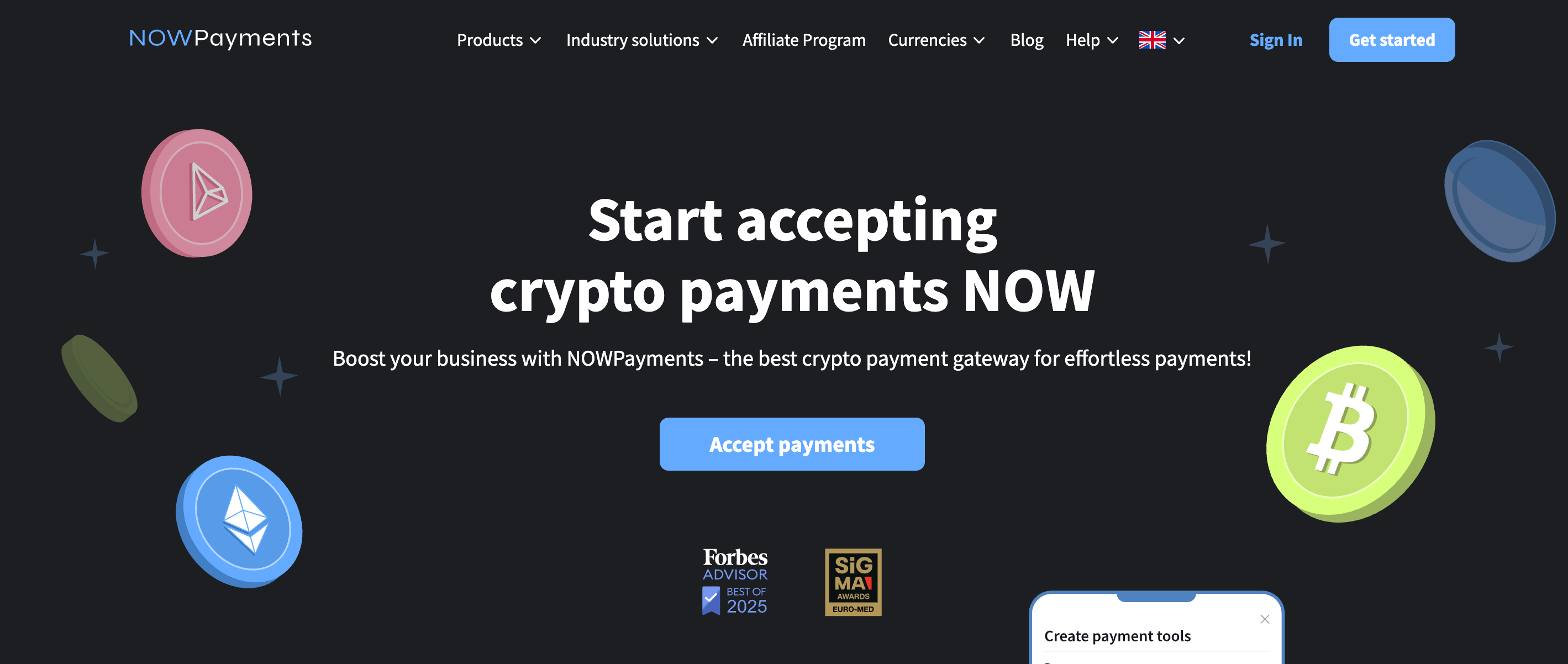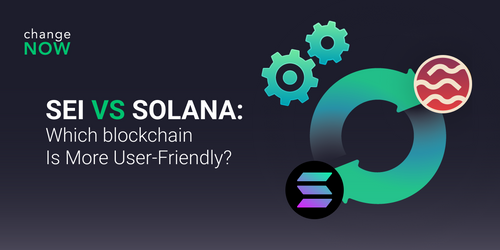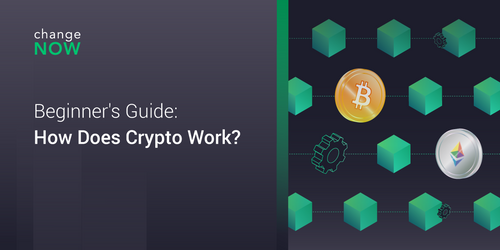Venmo Account Frozen: What to Do & Why Non-custodial Solutions Can Help

Key Takeaways
- Freezing of Venmo accounts: Accounts can be frozen due to failed payment, or if a user has broken Terms of Service. Another popular reason is that Venmo cannot verify one's identity. If an account is frozen, the user can follow the steps in the app or connect customer service for detailed instruction.
- Issues with traditional payment systems: Users of centralized platforms like Venmo can face problems such as account freezes, censorship, high fees, and delays, which make it harder to manage their funds.
- Web3 non-custodial solutions: Examples of Web3 non-custodial solutions include ChangeNOW, NOW Wallet, and NOWPayments. Such solutions give full control of the assets back to the user along with lower commissions, faster processing, and the ability for the user to keep transactions more private.
- Moving to non-custodial solutions: It is not hard to migrate from Venmo onto NOW Wallet or other non-custodial service. With platforms like ChangeNOW, people will be able to manage their crypto assets safely without having accounts frozen or operations delayed on centralized platforms.
Although we’re focusing on what to do if your Venmo account is frozen, these blocking principles apply to other similar systems as well. Understanding how to avoid such issues is valuable not only for Venmo users but for a wide range of people using digital payment platforms. Additionally, we’ll explore alternatives to traditional systems such as Web3 non-custodial solutions to help you take more control over your payments and avoid these problems in the future.
Why is my Venmo account frozen?
Like other payment systems, Venmo is designed to prevent fraud and ensure that all relevant financial regulations are complied with. This often causes accounts to be frozen for reasons users don't always understand. A variety of reasons can cause a freeze on a person's account, including, but not limited to:
- Suspicious Activity: the platform monitors accounts using algorithms that pick up unusual or suspicious activity. This can include large sudden transactions, payments to unknown individuals, or a spike in activity for no clear reason. The freezing could be a way to protect both the user and the platform from potential fraudulent and thieving activities.
- Disputes and Chargebacks: If there is a dispute or chargeback filed through the bank or credit card company, the platform might freeze an account until the problem is resolved. This can be frustrating for individuals who are only acting as middlemen in the deal that has gone wrong.
- Violations of Terms of Service: The platform has specific rules about what is and isn’t allowed on the platform. Users who do not comply with these terms by engaging in illegal activities or attempting to launder money, can have their accounts frozen. Venmo’s terms of service are strict, and it takes these violations very seriously [1].
- Identity Verification Issues: It may freeze accounts if it cannot verify the identity of a user. These happen most of the time when there is incomplete or incorrect information on the user's profile or if the account raises suspicions with verification systems.
Venmo account frozen: reasons and how to unfreeze it
There are a number of possible ways to fix your frozen Venmo account. The steps you need to take would depend on the reason the freeze happened.

Account is frozen due to a failed payment
If you got a message saying your account was frozen because of failed payment, follow the steps in the app to get it back [2].
- To start the recovery process, click on "Restore your account." You can also go to venmo.com/recover on a PC to pay.
- Using a debit card is the quickest way to pay for the recovery. It could take up to five business days for the payment to go through if you use a bank account.
- Your account will stay frozen until you pay the full amount to recover.
- When your account is unfrozen, you'll get an email.
You can change the repayment amount to make a partial payment if you cannot pay the full amount all at once.
- Tap the payment amount and type in the amount you want to pay before choosing "Pay."
- Any money you get on Venmo will automatically go toward what you owe.
Account is frozen due to other reasons
If your account was frozen due to other reasons, not failed payment, here are the general steps to help you get through it:
- Review Venmo’s Terms of Service: Make sure you didn’t violate the platform rules. In case your account gets frozen for breaking the rules, your account may stay frozen forever, or you may only be able to use some of its features. It depends on the rules you violated.
- Check for Any Notifications: The support team will typically notify you through the app or via email if your account is frozen. The notification, in most cases, outlines the reason for the freeze and provides instructions on how to resolve it. Read the message for an explanation of why your account was frozen.
- Contact Support: If you haven’t received an explanation or if the reason isn’t clear, you should reach out to Venmo’s customer support. They can provide more details and inform you of the next steps. You can contact support via the app, email, or phone. Be ready to provide your account details and any supporting information.
- Provide Requested Documentation: In many cases, they may request additional documentation to verify your identity or resolve any disputes. This could include photo ID, proof of address, or receipts for recent transactions. Make sure to provide this information as soon as possible to avoid further delays.
- Wait for Resolution: After providing the necessary documentation, the account freeze will typically be lifted within a few business days. However, it’s important to be aware that Venmo’s customer service team can be overwhelmed at times, and it may take longer than expected to resolve the issue.
Limitations of Venmo and other traditional payment platforms
Venmo and other traditional centralized payment platforms bring convenience but come with innate problems of account freezes, censorship, and reliance upon centralized authorities. Some of the main problems include:
- Centralized Control: Being centralized, a platform has full control over user data, transactions, and even the money itself. With such centralization, users can be exposed to risk because the platform may block access to accounts or even take money at any time. If such a platform freezes someone's account, for instance, users may have limited options to access their funds in the short term.
- Account Freezes Are Common: From what we have discussed earlier, there are numerous reasons why Venmo freezes one's account, many of which the user has no control over. This freeze can get very annoying and strain one's finances, although it may be an effort to stop fraud. For people who use centralized apps for everyday transactions, it can get really frustrating that they are not in control over their money.
- Censorship: Traditional payment systems are subject to censorship due to their reliance on centralized authorities. A company can restrict or block certain types of transactions, such as payments related to adult services, gambling, or political donations. That could mean that users cannot use their money where they want to.
- Transaction Delays and Costs: Traditionally, Venmo uses banking networks in conducting transactions that result in delays and high fees for cross-border payment settlements. This will be a major problem for people needing to send money over borders quickly, as it may take days to process.
So far, we've seen that traditional platforms are easy to use, but they also have problems like freezing accounts, censorship, and high fees. These problems show how important it is to have Web3 and decentralized finance (DeFi) solutions. Let’s discuss how non-custodial platforms give users full control, which makes them safer, more private, and more flexible for the future of financial transactions than centralized systems.
Why non-custodial solutions are the future
Web3 and decentralized finance (DeFi) are big changes in the way we do business and perform financial operations online. Centralized authorities run traditional payment platforms. But decentralized non-custodial solutions, which are at the heart of Web3, have a lot of benefits for users.
- Decentralization and Control: With non-custodial Web3 and DeFi platforms, users have full control over their assets. There are no intermediaries, and transactions are validated by a decentralized network of computers, making the system more transparent, secure, and resistant to censorship.
- Security and Privacy: Web3 platforms use advanced cryptographic techniques to ensure that users’ assets and transaction details remain private and secure. Venmo can freeze an account based on its own algorithms or rules, but decentralized systems are made to be hard to censor and freeze for no obvious reason.
- Fast and Low-Cost Transactions: Web3 wallets like NOW Wallet let you make fast, cheap transactions all over the world without having to use traditional banking systems. Transfers on blockchain networks can be processed almost right away, and the fees are usually much lower than those charged by traditional services.
- Borderless Payments: One of the best things about Web3 solutions is that they let you make transactions without borders. Crypto exchanges like ChangeNOW and wallets like NOW Wallet make it easy and quick to send money to someone across the world or get paid in a different currency. You don't have to worry about cross-border fees or currency exchange. In our recent article we compared traditional banking fees and blockchain fees. According to our research, decentralized networks can save you up to 90% on most international transfers! Read more insights: Blockchain vs Bank Transfer Fees 2025: Ultimate Cost Analysis.
Comparison between Traditional Banking and Web3 Non-Custodial Solutions
| Aspect | Traditional Banking | Web3 Non-Custodial Solutions |
|---|---|---|
| Control Over Funds | Bank holds and controls funds. Users rely on the institution for access. | Users have full control over their funds (private keys). No third-party intervention. |
| Privacy | Requires personal information and data storage. Transactions are tracked. | Privacy-preserving, with no personal data stored on the blockchain. |
| Security | Banks use centralized security protocols and rely on trusted third parties (e.g., insurers). | Security relies on blockchain encryption and cryptographic methods. Users are responsible for their private keys. |
| Transaction Speed | Transactions can take several business days, especially for international payments. | Transactions are typically near-instant, depending on the blockchain network. |
| Transaction Fees | High fees for international transfers, wire services, and other services. | Lower fees, especially for cross-border transfers. Fees depend on the blockchain used. |
| Access & Availability | Limited by operating hours and banking systems. | 24/7 access to funds and services. No geographic restrictions. |
| Censorship | Banks can freeze accounts, restrict payments, or refuse service based on internal policies. | Legal transactions are decentralized and cannot be censored or blocked by a single entity. Still they can be frozen due to AML policies. |
| Regulation | Heavily regulated by government entities. | The regulatory landscape is still developing. Limited oversight but growing interest in regulation. |
| Account Verification | Requires identity verification (e.g., KYC) before using services. | No need for KYC for crypto-to-crypto transactions; users are anonymous unless they choose to disclose their identity or KYC needed to prevent fraudulent activities. |
| Reliability | Trusted by governments and institutions; backed by financial regulations. | Dependent on decentralized networks and open-source protocols. |
| Control Over Assets | Assets are held in centralized accounts, subject to bank’s policies. | Assets are fully under the control of the user. No third-party access unless users provide access (e.g., smart contracts). |
| Governance | Decisions are made by centralized institutions (banks, governments). | Governance is often decentralized, allowing token holders to participate in decision-making. |
How NOW solutions work & why they are a great Venmo alternative
Unlike centralized platforms, NOW solutions do not hold your funds, giving you full control over your assets. While we prioritize user security and follow AML guidelines to prevent fraud, our approach avoids the frequent freezes of funds and limitations often seen on traditional platforms. This creates a more flexible and user-friendly experience, with a strong commitment to safety and compliance.
NOW Wallet: Convenient and free crypto wallet with full control for you
The ChangeNOW team developed NOW Wallet, a mobile wallet that enables users to securely store and manage their digital assets. NOW Wallet is not an application like Venmo, which holds your information on a central server. It means that users still own their private keys, giving them even more security and control over their assets.
The wallet supports many different cryptocurrencies; thus, it has more options compared with ordinary means of paying for goods and services. NOW Wallet is user-friendly; because of this, both new and experienced crypto traders can work with it. In contrast, centralized systems usually have very long verification processes and most of them don't allow working with cryptocurrency services.
ChangeNOW: A crypto exchange that makes transactions easy and safe
ChangeNOW is a cryptocurrency exchange that doesn't hold your coins. You can trade a wide range of digital currencies without needing to create an account or go through a long registration process. Though, you can create an account to unlock additional benefits, such as unlimited cryptoloans and cashback for every transaction.
ChangeNOW differs from the traditional form of centralized payment systems in that it does not require personal information or third-party intermediary involvement for crypto-to-crypto transactions. Instead, users can change 1500+ cryptocurrencies with just a few clicks. The platform boasts competitive rates and promises privacy by not keeping any user data. For this, it is a perfect substitute for centralized payment systems such as Venmo or PayPal, which collect, store, and use user data for a variety of reasons.
NOWPayments: An easy way to pay with crypto
NOWPayments is a flexible crypto payment gateway that allows businesses to accept more than 300 different crypto and 75 fiat currencies.
NOWPayments offers lower costs (0.5% fees) and flexibility. Businesses can avoid much of the red tape associated with traditional payment systems, such as geographic limits and reliance on middlemen, using crypto payments. Additionally, NOWPayments provides instant settlement, meaning that businesses have access to their money more quickly than they would if using a conventional banking system, which often has long wait times.
NOWPayments is a good solution for companies wanting to be a part of the rising trend in cryptocurrency payments without many of the headaches of centralized solutions.

ChangeNOW, NOW Wallet, and NOWPayments give users more control, security, and privacy than centralized payment processing systems like Venmo. They make it easy for both people and businesses to buy, sell, and exchange money without high fees, long wait times, and strict rules that come with traditional financial services.
Steps to Transition from Venmo to NOW Wallet
Switching from Venmo to NOW Wallet is a simple and secure process. Here’s a step-by-step guide:
- Download NOW Wallet: Start by downloading the NOW Wallet app from the official website or app store.
- Create Wallet: Set up your wallet by creating a secure account. This process involves generating a private key that you must keep safe.
- Transfer Assets: Transfer your funds from Venmo or another platform to your NOW Wallet. This can be done through a crypto exchange or by receiving funds directly to your wallet. If you need to convert fiat money to crypto, use ChangeNOW for a fast and secure process.
- Start Using Your Wallet: Once your funds are in your NOW Wallet, you can start making transactions, staking assets, or using the wallet for other DeFi activities.
- Explore Web3 and DeFi: Explore the wide range of decentralized applications (dApps) and DeFi services that NOW Wallet integrates with, and learn how to take full advantage of the Web3 ecosystem.
Conclusion
Venmo and other traditional centralized payment systems are useful, but they also have a lot of issues, like account freezes, delays, high fees, and losing control of your money. These platforms rely on third-party intermediaries, centralized control, and often censor transactions. It can be very frustrating for those who need instant payments.
ChangeNOW, NOW Wallet, and NOWPayments are non-custodial solutions that give you more control, security, and privacy. ChangeNOW's crypto exchange, NOW Wallet's simple mobile wallet, and NOWPayments' flexible payment gateways will all make transactions quick, cheap, and free of borders. Users won't have to worry about their accounts being frozen or their money being limited. These decentralized platforms give people and businesses full control over their money, making online life more efficient.
Take control of your finances now with the NOW ecosystem. Become a part of a decentralized world by clicking button below:




